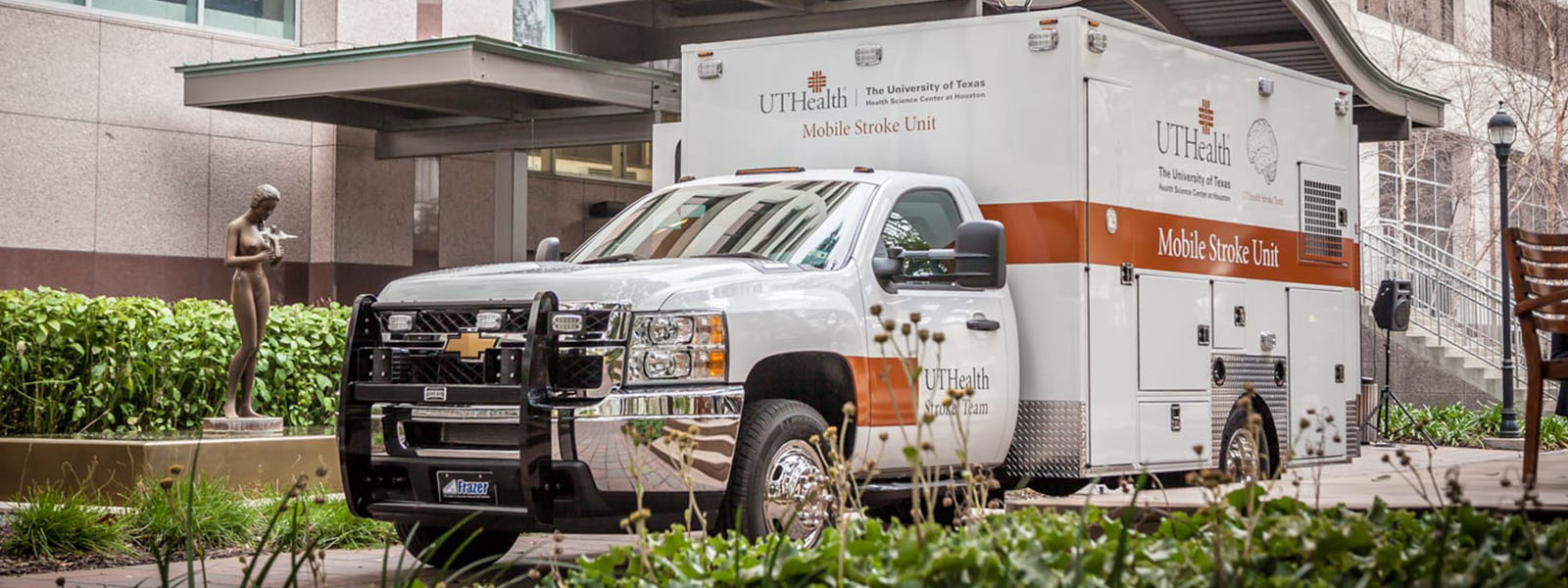
Mobile Stroke Unit
Bringing a stroke response team to the field, saving precious minutes when every second counts
In 2014, McGovern Medical School at UTHealth in partnership with Memorial Hermann-Texas Medical Center were the first in the nation to launch a mobile stroke unit.
It typically takes roughly an hour once a stroke patient arrives in the emergency room to receive treatment. So if we can actually put the emergency room in the ambulance and take the CT scanner to the patient, we could treat the patient at the scene with the medication and save that hour.
Dr. James Grotta
Director of Stroke Research, Clinical Institute for Research and Innovation, Memorial Hermann – Texas Medical Center
Strokes are caused by interruptions in blood flow to the brain from blockages in arteries which can have serious consequences such as losing the ability to speak or walk. Strokes are the fourth leading cause of death in the United States and a leading cause of disability.
The only treatment for a stroke has to be given within hours of the onset of symptoms to be effective and safe – and the sooner the better.
The Mobile Stroke Unit (MSU) brings the entire stroke treatment team to the patient. The MSU is a specialized ambulance equipped with a computed tomography (CT) scanner that allows team members to identify the type of stroke. It also includes equipment for performing blood tests and the clot-busting drug that can treat strokes.
The MSU team include a critical care nurse, paramedic and CT technology expert – and together they communicate with a stroke neurologist to determine the treatment plan.
By identifying strokes faster and starting treatment sooner, the MSU is saving precious minutes when a stroke patient is losing nearly half-a-million brain cells per second.